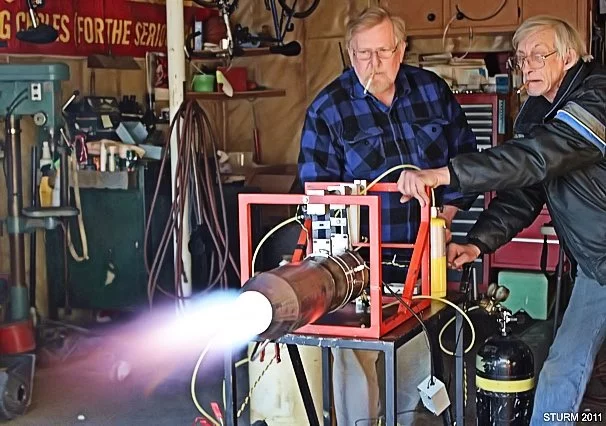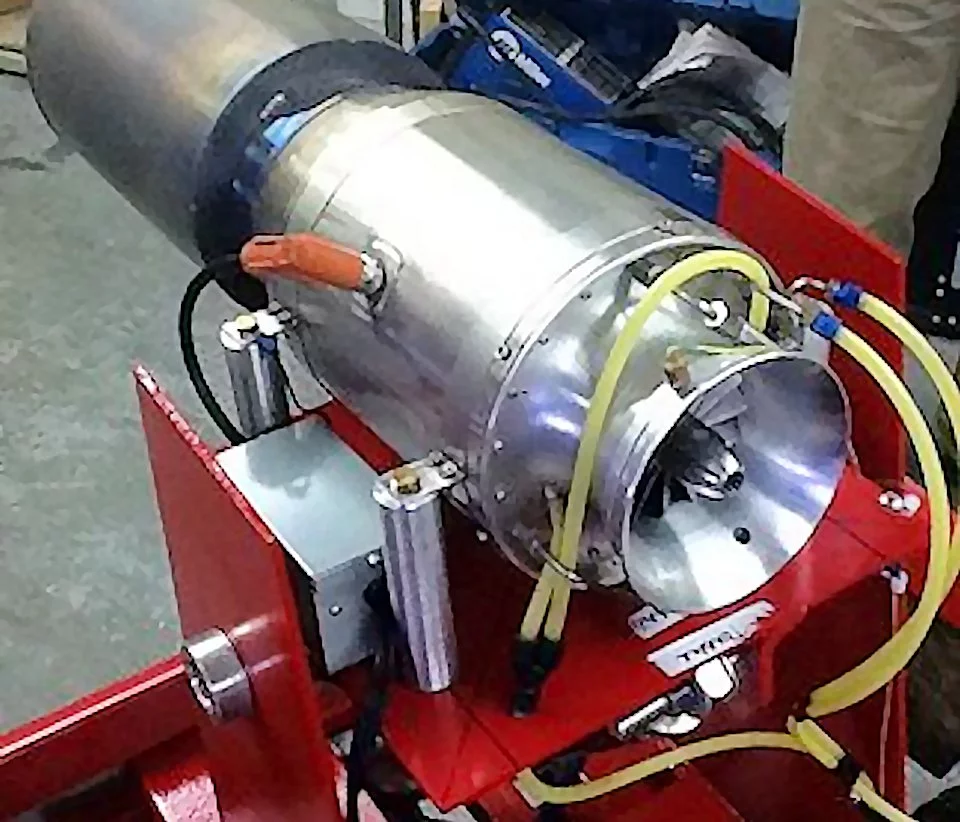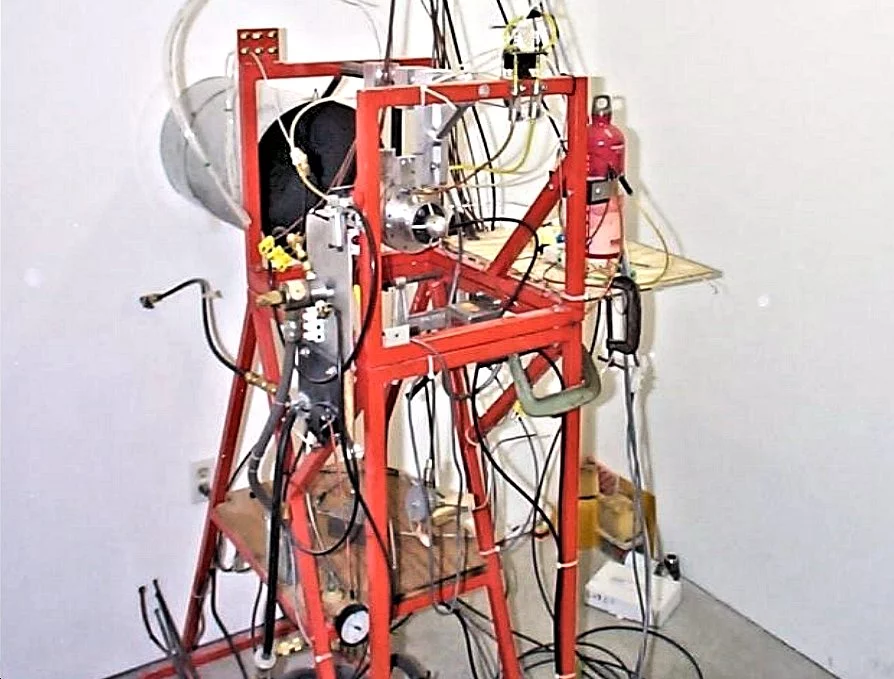The Bell rocket belt captured the world's imagination when it was featured in the 1965 James Bond movie Thunderball. Now, the folks at Jet Machines Extreme (JME) are designing a modern version not powered by rockets, but by a set of four miniature turbojets. The new Jet Vest is expected to offer free flying times nearly four minutes in duration. Having run short of development money, JME is exploring another modern innovation by reaching out to crowd-funding site Kickstarter for a boost.
In the late 1960s, Bell Aerosystems attempted to overcome the short flight times of their rocket belt by developing a turbojet-powered version that could fly for half an hour instead of half a minute. The Bell jet flying belt used an early Williams International turbojet with a thrust of 430 pounds (195 kg) to extend flight times from the 20-30 seconds of the rocket belt to 20-30 minutes. A number of test flights were made, but the inventor's death from a heart attack resulted in cancellation of the program.

Nearly 50 years later, Dieter Sturm and Jeff Seymour of JME want to bring their Jet Vest, a personal flying system powered by miniature turbojets, into reality. In the present design, the Jet Vest is powered by a set of four SWB-100 micro jet turbine engines, originally developed for the Navy Affordable Weapon System (AWS) program. This program sought to introduce a cruise missile constructed mostly from parts available "over the counter" to reduce costs. Costing only a small fraction of the million-dollar Tomahawk cruise missile, the AWS cruise missile would have an operational range and speed similar to that of the Tomahawk, but would carry a smaller warhead (200 lb vs 1,000 lb (91 kg vs 455 kg)).

SWB Turbines, the company developing the jets for the AWS program, is owned by Jeff Seymour, now one of the partners in JME. He brought with him a wealth of experience, construction and testing facilities, and several surplus SWB-100 turbojets. His long participation in the AWS development program resulted in these engines having undergone and passed the US Government Certification Program, landing the SWB-100 turbojets at a different level of reliability than the numerous small turbojet engines presently being sold for radio controlled airplanes. A test firing of an SWB-100 jet engine fitted with an afterburner appears in the video at the bottom of the page.

It is interesting to compare the design of the Bell jet flying belt and the Jet Vest. The SWB-100 weighs 11.5 lb (5.2 kg), and provides a nominal 100 lb (45 kg) of thrust, although it can be run at 107 lb (49 kg) for brief periods. The thrust-to-weight ratio is 8.7:1. While at full power the SWB-100 consumes about 130 lb (59 kg) of Jet A fuel per hour.
In comparison, the Williams WR19 used in the Bell jet flying belt weighed about 60 lb (27 kg), and produced 430 lb (195 kg) of thrust, giving a thrust-to-weight ratio of 7:1. The WR19 consumes about 300 lb (136 kg) of fuel per hour. As four of the SWB-100 engines are required to provide the same level of thrust, the WR19 engine, although heavier than the four SWB-100 engines, was far more fuel efficient, burning a bit more than half the fuel required by the modern engines.
Both jet packs have roughly equal thrust and take-off weight (350-365 lb, or 160-166 kg), so have very similar performance profiles. The main difference is that the superior fuel efficiency of the Williams WR19 gave the Bell system a flight time of about 20 minutes, compared to about four minutes for the JME Jet Vest.
The sad part of this is that the Kickstarter campaign doesn’t seem to be doing very well. We asked Dieter about the chances of meeting the US$30,000 funding goal by the deadline at year's end. "As we know from research, the Kickstarter program appeals to backers who would like to own one of their own 'widgets' that is being offered," replied Dieter. "Clearly understandable. In our case and the same for a few other unique types of projects that are not being mass produced for purchase, we bring our Project before the world to see if people would like to give fellow inventors a helping hand. Simple as that. We have funded the project to date out of our own pockets, but we could accelerate our progress with better funding. We know the Jet Vest will fly someday, it's just a matter of how quickly we can keep the momentum going. Our goal is to be flying on tether by the next EAA Oshkosh AirVenture show in late July 2013. That's our focus."
Source: Kickstarter







